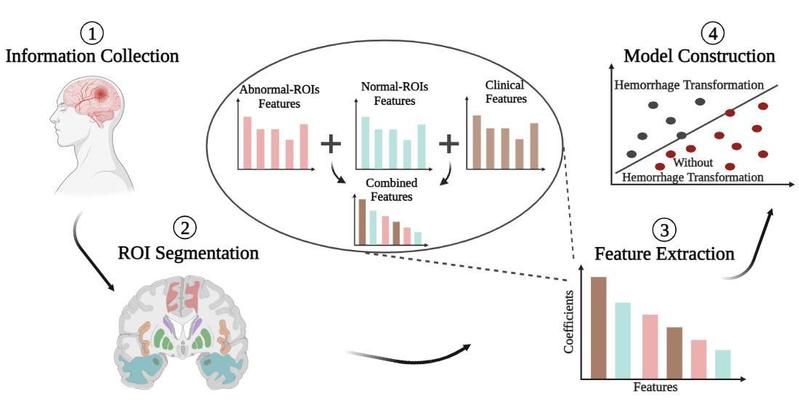

Prediction Model of Hemorrhage Transformation in Patient with Acute Ischemic Stroke Based on Multiparametric MRI Radiomics and Machine Learning
Yucong Meng*, Haoran Wang*, Chuanfu Wu*, Xiaoyu Liu, Linhao Qu, Yonghong Shi†
Brain Sciences (IF=3.394)
Abstract
Intravenous thrombolysis is the most commonly used drug therapy for patients with acute ischemic stroke, which is often accompanied by complications of intracerebral hemorrhage transformation (HT). This study proposed to build a reliable model for pretreatment prediction of HT. Specifically, 5400 radiomics features were extracted from 20 regions of interest (ROIs) of multiparametric MRI images of 71 patients. And a minimal set of all-relevant features were selected by LASSO from all ROIs and used to build a radiomics model through the random forest (RF). To explore the significance of normal ROIs, we built a model only based on abnormal ROIs. In addition, a model combining clinical factors and radiomics features was further built. Finally, the models were tested on an independent validation cohort. The radiomics model with 14 All-ROIs features achieved pretreatment prediction of HT (AUC=0.871, accuracy=0.848), which significantly outperformed the model with only 14 Abnormal-ROIs features (AUC=0.831, accuracy=0.818). Besides, combining clinical factors with radiomics features further benefited the prediction performance (AUC=0.911, accuracy=0.894). So, we think that the combined model can greatly assists doctors in diagnosis. Furthermore, we find that even if there were no lesions in the normal ROIs, they also provide characteristic information for the prediction of HT.
